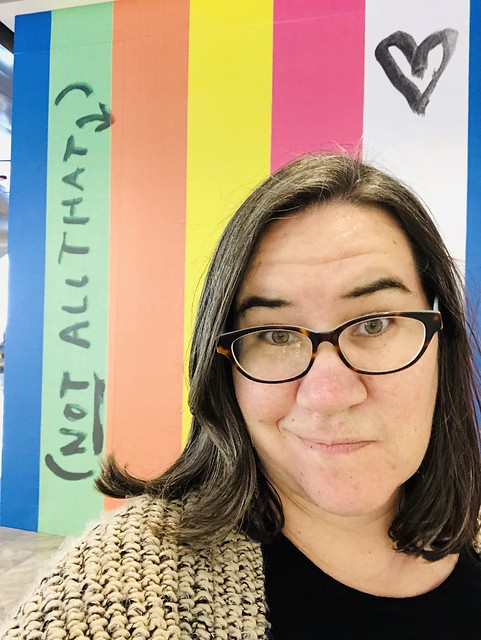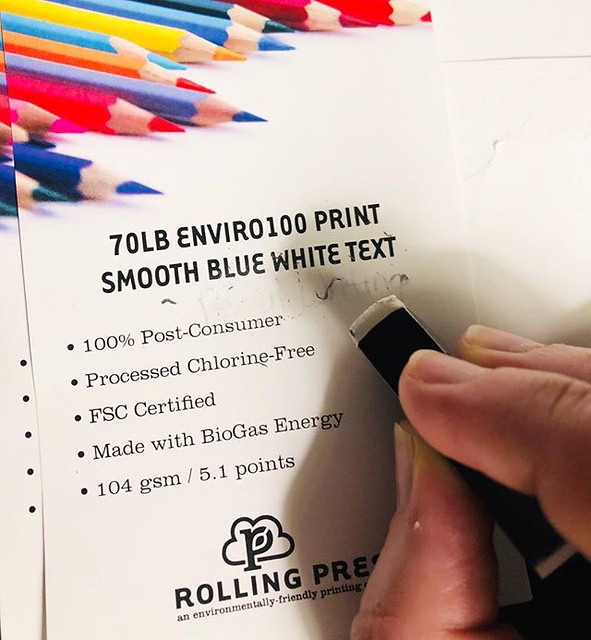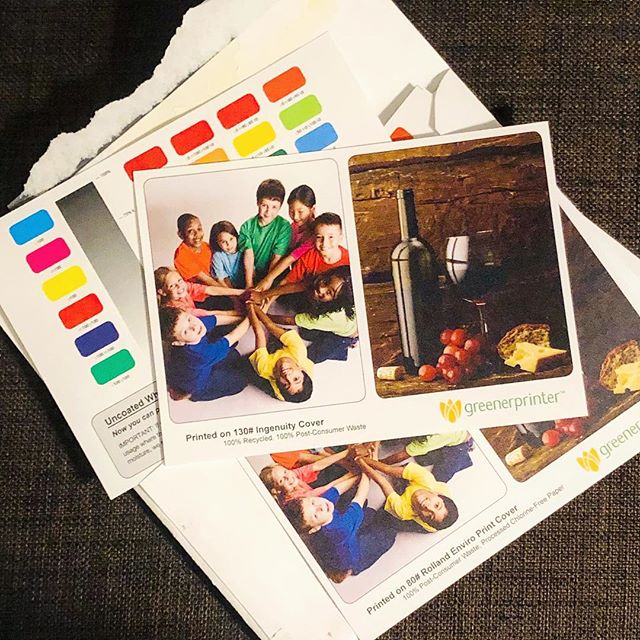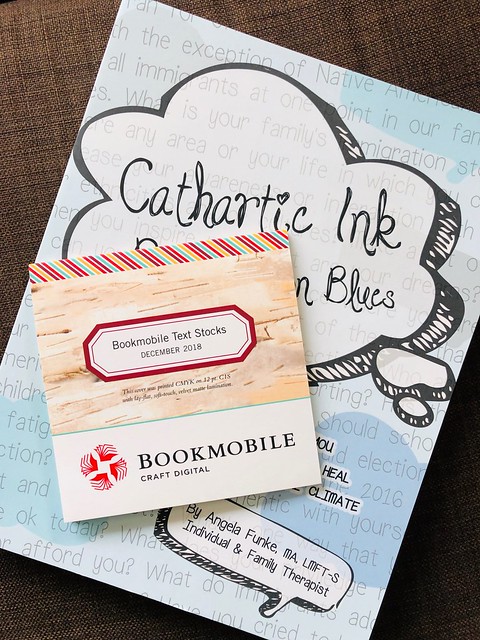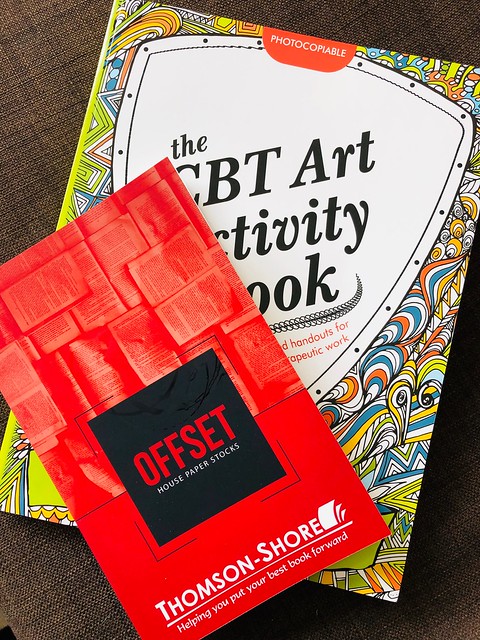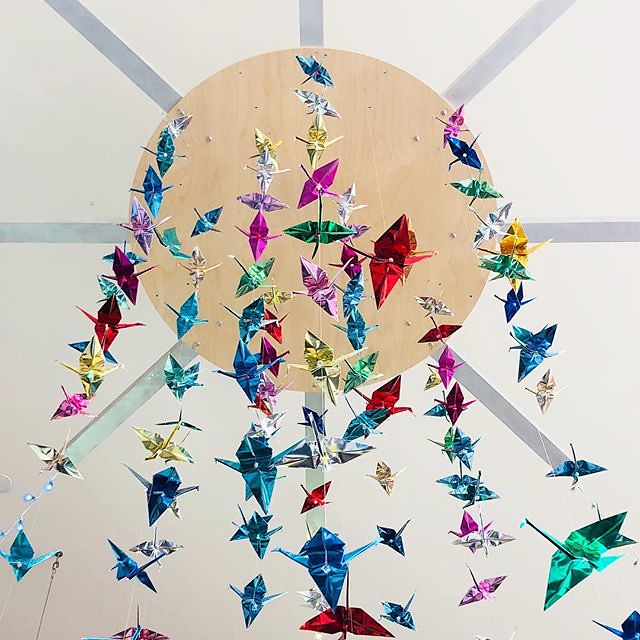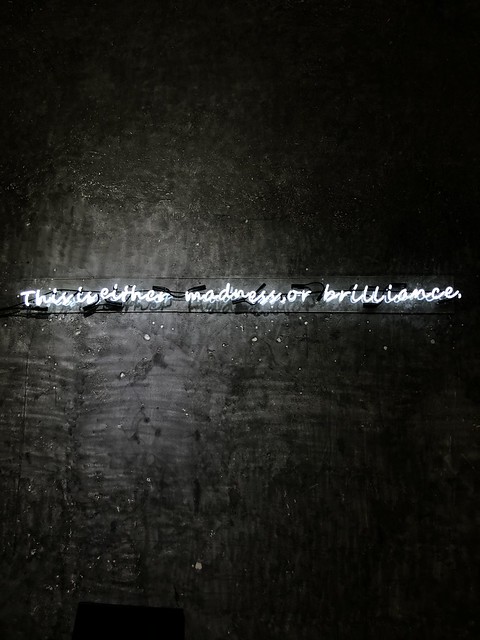I published the the Pricing Workbook for Creatives in May of this year. It's currently October. I've already shared everything I did and didn't do as I prepared to launch the book. Now that it's 5 months after publication, where am I with regard to getting this book out into the hands of people who it will help?
Books Sold in the First Five Months: 50
I wish I was further along. It's a good thing I have zero ego and expectation around how many books I've sold so that I can just share this openly and honestly. I'm not comparing against anyone else, just looking at where I am compared to where I want to be. I didn't find anyone else who shared their self-published early sales numbers or details of their early efforts, so I'm sharing mine as a slice of reality pie.
I'd say 90% of these book purchases are people I know personally, or people who have known me through social media for a few years. 50% of these were sold in the first month, largely due to my launch efforts. I'm grateful for each person who has taken this work seriously and is digging into doing the work. I know this workbook helps people build and run better creative businesses. The formulas work, but only when people do them, and making time to do the work is often the hardest part. The same is true for doing the work of promoting the book.
The books I've given away for review or as gifts are less likely to be put to good use than the books that people have bought for themselves. That's just reality and the fact that people tend to value the things they pay for more than the things they are given. I would love to host more workshops where I can help facilitate the process in a space dedicated to doing the work, but how and where that can happen still represents a series of unknowns.
I know I can help someone get through the first worksheet in an hour or two even if they have never looked at those numbers before. The second worksheet is dependent on the industry and recognizing what goes into someone's creative work, so the time is more organizational/thinking time for the creative. The third worksheet often requires some research time if someone hasn't run a business before, but can usually be accomplished in a few hours. In my dream scenario, I would love to gather people for a week-long retreat, where they spend a couple hours doing the work together each day, and then the rest of the day focusing on creative experiments and talking to each other about the challenges and solutions that come up as they do the work.
I'm basically hand-selling every individual copy of the book right now.
When I look at where things are, I also see that I haven't invested a ton of energy in book promotion. I've been traveling a lot. I've been experiencing places, people, and learning new things, but I haven't been investing time in the efforts needed to get this book out to people who can benefit the most from the work. I knew it would require a lot of individual effort in the beginning, much like many creative endeavors have required. However, I also thought Amazon listing would be able to help just a little more than they really do. Granted, I also have not invested anything into advertising at this point, which is still an option that I will likely run a test on in the future. I also know that we're approaching the busiest season of the year for nearly all creatives, and that there will be more time for creatives to look at their business when winter rolls around and they can work on business goals rather than just focusing on business tasks.
Received First Five Star and First One Star Review
Thankfully the first review was the five star review from someone who beta-tested the book and I respect highly as an artist and an educator. That review was amazing to read because it outlined exactly what many of my consulting clients experienced as well when they went through the process. I'm so glad that was the first review I got to read because it really highlighted what's possible for people who do the work.
When the second review appeared as a one star review, I was able to take it in gracefully. I don't know if it's the amount of self-development work I've done, but it actually didn't bother me to get a 1 star review. It bothered me that the person may have reviewed the book without actually working through the worksheets, but their review actually confirmed some of what I think makes the workbook helpful and valuable...
"It's 7th grade level math."
Yes- it was designed to be so easy that young entrepreneurs could make use of it with basic math!
"It's more like a workbook.. there's nothing in it.."
Yes- the value is in the process of filling out the worksheets and formulas with personalized info!
So, I responded to this review with validations that yes, this is all part of the design of the book. The reviewer also complained about price, so I also provided the reviewer with a link to the 10 years and hundreds of FREE pricing and business articles I've shared publicly on PhotoLovecat, and encouraged them to gift the book to a young and budding entrepreneur who will make use of it.
When I look at the price of this book, I see all the other ways that this information can be earned or gained. It is way less expensive than the $350,000 or more of trial and error you might spend to figure it out in your own business. It's a lot less than a college business course that might cost $3,500. It's still cheaper than a short consulting session that might be $350. Yet, all that value and experience that I have invested is packed into a $35 book. What's expensive is not the book, but all of the experience that went into making a creative business building process into a book easy enough for a 7th grader to figure out. I get it though, unless you actually go through the process, it just looks like some simple forms. Filling the forms out is where everyone confronts the challenges.
Into every creator's life, there are bound to be negative reviews of our work. It comes with the territory of putting ourselves and our work out into the world. I'm so much better about taking in negative feedback now than when I started my creative journey professionally. Oh man, in the beginning, negative feedback was devastation. Now I'm able to read it, decipher if there are any gems of wisdom that I can really learn from, or if it's just a bunch of negativity directed at a review box. I'm much less emotionally charged and much more neutral about other people's opinions than I used to be regarding my creative work. I think I have confidence about this book regardless of reviews because of how much trial and error I was able to put into the work before I put it into book format. I know it works, but it still requires people to put in their own work to get there, which is emphasized at the beginning of the book.
The Mistake I Made with Early-Bird Sales
Getting a negative review also highlighted one of the mistakes I made with early-bird sales. I didn't encourage people to pre-order the book on Amazon because I couldn't offer a special price to some people but not others. I probably could have offered a discounted price for the first week and then raised the price on Amazon, but there were so many things to figure out for the first time in that period that I didn't fully understand how that might impact me later and I didn't have time to do more research about the consequences.
The downside of having people get the book directly through me at an early-bird discount rather than ordering on Amazon was that my early supporters did not get their book purchases listed as verified purchases on Amazon. (Another downside may also be all the individual hand-labor that went into shipping the book directly, but I loved being able to write personal thank you notes to each person.) With only two reviews of the book - one being from a book beta-tester who didn't show up as a verified purchase because they had access to the book before it was released and one from a verified purchase - I noticed that Amazon gave greater weight to the verified purchase review. In the star category, it listed the verified purchase 1 star review at 51% and the 5 star review from the beta-tester at 49%. So there is a mathematical weight given to verified reviews in how stars appear on the site and which reviews show up at the top of the review section, regardless of how "Helpful" someone's review has been voted.
Asking for Reviews
Once I saw how Amazon was giving weight to this 1 star review, I realized I needed to circle back with a few more people who I knew had worked through the book to ask if they can provide a review to help others who are considering the workbook. Now, this is one benefit to beta-testing the book and hand-selling that first batch of books- because I actually KNOW who received copies of the book because I placed those orders personally. Even if Amazon doesn't give those book owners and book reviews greater weight, they can still share their thoughts and what they gained from the book for other readers to consider.
So, if you're able to collect emails of people who are placing pre-orders, than you can have the best of both worlds when it comes to verified reviews and being able to follow-up with people. At this point, there are 3 reviews out of 50 books sold, and two of those people beta-tested the book before it was released, so they don't show up as verified reviews, unfortunately. I have a few more ideas about how to work on this, but I'm also open to more ideas.
Finding Promotional Opportunities
Many of the promotional opportunities I've had so far to share the book have come from me reaching out directly to people who are cultivating an audience that I think will benefit from the book. There have been a couple invitations that came to me before I reached out to them, but they were usually connected to me reaching out to someone else to help them out by sharing the work I've done. Obviously, if you aren't up for self-promotion, it could be even more challenging to get your work into the right hands.
One of the speed bumps I've run into is living on the opposite side of the world, away from most of the market where the book can be easily purchased and distributed. I can submit blog posts, or books for review, but things like lining up times for calls or interviews for videos or podcasts presents some challenges when meetings need to happen at the fringes of the day in those couple hours where people 12 time zones apart are both awake. I could target the Australian and Asian market, which are closer in time zones, but there are other distribution challenges that need to be resolved before that makes sense.
Then there are the internet connectivity issues that come with being in China. This week has been loaded with them due to the 70th Anniversary of the People's Republic of China, aka National Day, aka Golden Week. VPN Access to social media sites and Google have either been blocked or very slow to load, such that working online has been frustrating at best and hasn't yielded much productivity. To maintain my sanity rather than banging my head against a wall, I decided to give up doing too much research or communication until after the holiday is over. This was supposed to be the perfect week to focus while I'm in Shanghai alone, but it has actually yielded the least productivity in the areas I was hoping to make progress due to internet issues. These are the realities of attempting to be productive while traveling.
Website?
The website that I'd hoped was going to be ready by now, is not finished. If I were to do this over again and link a website to a book, I think I would choose to just utilize a basic template that requires no design decisions or custom branding in order to have a fast website. Instead I chose to hire a custom designer for a larger overhaul of a site that will serve multiple purposes, and I knew the process would take long, but it has taken even longer than I'd hoped due to the communication challenges of needing to work asynchronously online on opposite time zones.
Without a website, there are certain larger publicity outlets that I hesitate to reach out to because I know they want to see some evidence of my "street cred" beyond my LinkedIn experiences, Instagram adventures, and Facebook pages. This is where being in limbo with a custom site I'm not in full control of starts to feel like just one more challenge to overcome rather than one more support system to draw upon.
Picking Myself Up When I Feel Defeated
I have a few friends who are rooting for me and for the success of the book, and for them I am so grateful. They breathe wind into my sails when I just want to drown in the weight of what needs to be done. It is so easy to feel defeated and want to give up. Atrophy is so much easier than climbing the uphill battles. Most days I'm the one who has to push my own frustrated self, kicking and screaming internally in protest, up the figurative hill. I know that I just have to keep moving forward, in spite of all the obstacles.
Part of me wants to say screw it all and focus on something easier and more fun... which is admittedly what I get to do while while traveling... but I also know that's not going to help as many people as continuing to work through the challenges of getting this work to people who will benefit from it. I think this also speaks to why you must be passionate about the work you create- because the challenges are only worth overcoming when you love what you do or you deeply believe your work will create a positive impact in the world.
Small Wins
I'm good at taking stock of my mistakes and losses, it's how I acknowledge what needs to be better. However, I also think it's important to celebrate any wins that help move things in the right direction, no matter how small. So, here are the promotional invitations that have panned out and been shared since I published the book. Both were recorded while I was on a great internet connection in NYC. I actually had more interviews scheduled, but a couple people cancelled, and one that was recorded has not been released yet:
How to be an Artist Creator Profile
Tiffinbox YouTube Interview of Pricing Workbook for Creatives
This one was also recorded and shared with a limited audience before the book was released:
Pricing Strategies for Creatives with Libby Co.
Want to Read More of my Self-Publishing Journey?
Books Sold in the First Five Months: 50
I wish I was further along. It's a good thing I have zero ego and expectation around how many books I've sold so that I can just share this openly and honestly. I'm not comparing against anyone else, just looking at where I am compared to where I want to be. I didn't find anyone else who shared their self-published early sales numbers or details of their early efforts, so I'm sharing mine as a slice of reality pie.
I'd say 90% of these book purchases are people I know personally, or people who have known me through social media for a few years. 50% of these were sold in the first month, largely due to my launch efforts. I'm grateful for each person who has taken this work seriously and is digging into doing the work. I know this workbook helps people build and run better creative businesses. The formulas work, but only when people do them, and making time to do the work is often the hardest part. The same is true for doing the work of promoting the book.
The books I've given away for review or as gifts are less likely to be put to good use than the books that people have bought for themselves. That's just reality and the fact that people tend to value the things they pay for more than the things they are given. I would love to host more workshops where I can help facilitate the process in a space dedicated to doing the work, but how and where that can happen still represents a series of unknowns.
I know I can help someone get through the first worksheet in an hour or two even if they have never looked at those numbers before. The second worksheet is dependent on the industry and recognizing what goes into someone's creative work, so the time is more organizational/thinking time for the creative. The third worksheet often requires some research time if someone hasn't run a business before, but can usually be accomplished in a few hours. In my dream scenario, I would love to gather people for a week-long retreat, where they spend a couple hours doing the work together each day, and then the rest of the day focusing on creative experiments and talking to each other about the challenges and solutions that come up as they do the work.
I'm basically hand-selling every individual copy of the book right now.
When I look at where things are, I also see that I haven't invested a ton of energy in book promotion. I've been traveling a lot. I've been experiencing places, people, and learning new things, but I haven't been investing time in the efforts needed to get this book out to people who can benefit the most from the work. I knew it would require a lot of individual effort in the beginning, much like many creative endeavors have required. However, I also thought Amazon listing would be able to help just a little more than they really do. Granted, I also have not invested anything into advertising at this point, which is still an option that I will likely run a test on in the future. I also know that we're approaching the busiest season of the year for nearly all creatives, and that there will be more time for creatives to look at their business when winter rolls around and they can work on business goals rather than just focusing on business tasks.
Received First Five Star and First One Star Review
Thankfully the first review was the five star review from someone who beta-tested the book and I respect highly as an artist and an educator. That review was amazing to read because it outlined exactly what many of my consulting clients experienced as well when they went through the process. I'm so glad that was the first review I got to read because it really highlighted what's possible for people who do the work.
When the second review appeared as a one star review, I was able to take it in gracefully. I don't know if it's the amount of self-development work I've done, but it actually didn't bother me to get a 1 star review. It bothered me that the person may have reviewed the book without actually working through the worksheets, but their review actually confirmed some of what I think makes the workbook helpful and valuable...
"It's 7th grade level math."
Yes- it was designed to be so easy that young entrepreneurs could make use of it with basic math!
"It's more like a workbook.. there's nothing in it.."
Yes- the value is in the process of filling out the worksheets and formulas with personalized info!
So, I responded to this review with validations that yes, this is all part of the design of the book. The reviewer also complained about price, so I also provided the reviewer with a link to the 10 years and hundreds of FREE pricing and business articles I've shared publicly on PhotoLovecat, and encouraged them to gift the book to a young and budding entrepreneur who will make use of it.
When I look at the price of this book, I see all the other ways that this information can be earned or gained. It is way less expensive than the $350,000 or more of trial and error you might spend to figure it out in your own business. It's a lot less than a college business course that might cost $3,500. It's still cheaper than a short consulting session that might be $350. Yet, all that value and experience that I have invested is packed into a $35 book. What's expensive is not the book, but all of the experience that went into making a creative business building process into a book easy enough for a 7th grader to figure out. I get it though, unless you actually go through the process, it just looks like some simple forms. Filling the forms out is where everyone confronts the challenges.
Into every creator's life, there are bound to be negative reviews of our work. It comes with the territory of putting ourselves and our work out into the world. I'm so much better about taking in negative feedback now than when I started my creative journey professionally. Oh man, in the beginning, negative feedback was devastation. Now I'm able to read it, decipher if there are any gems of wisdom that I can really learn from, or if it's just a bunch of negativity directed at a review box. I'm much less emotionally charged and much more neutral about other people's opinions than I used to be regarding my creative work. I think I have confidence about this book regardless of reviews because of how much trial and error I was able to put into the work before I put it into book format. I know it works, but it still requires people to put in their own work to get there, which is emphasized at the beginning of the book.
The Mistake I Made with Early-Bird Sales
Getting a negative review also highlighted one of the mistakes I made with early-bird sales. I didn't encourage people to pre-order the book on Amazon because I couldn't offer a special price to some people but not others. I probably could have offered a discounted price for the first week and then raised the price on Amazon, but there were so many things to figure out for the first time in that period that I didn't fully understand how that might impact me later and I didn't have time to do more research about the consequences.
The downside of having people get the book directly through me at an early-bird discount rather than ordering on Amazon was that my early supporters did not get their book purchases listed as verified purchases on Amazon. (Another downside may also be all the individual hand-labor that went into shipping the book directly, but I loved being able to write personal thank you notes to each person.) With only two reviews of the book - one being from a book beta-tester who didn't show up as a verified purchase because they had access to the book before it was released and one from a verified purchase - I noticed that Amazon gave greater weight to the verified purchase review. In the star category, it listed the verified purchase 1 star review at 51% and the 5 star review from the beta-tester at 49%. So there is a mathematical weight given to verified reviews in how stars appear on the site and which reviews show up at the top of the review section, regardless of how "Helpful" someone's review has been voted.
Asking for Reviews
Once I saw how Amazon was giving weight to this 1 star review, I realized I needed to circle back with a few more people who I knew had worked through the book to ask if they can provide a review to help others who are considering the workbook. Now, this is one benefit to beta-testing the book and hand-selling that first batch of books- because I actually KNOW who received copies of the book because I placed those orders personally. Even if Amazon doesn't give those book owners and book reviews greater weight, they can still share their thoughts and what they gained from the book for other readers to consider.
So, if you're able to collect emails of people who are placing pre-orders, than you can have the best of both worlds when it comes to verified reviews and being able to follow-up with people. At this point, there are 3 reviews out of 50 books sold, and two of those people beta-tested the book before it was released, so they don't show up as verified reviews, unfortunately. I have a few more ideas about how to work on this, but I'm also open to more ideas.
Finding Promotional Opportunities
Many of the promotional opportunities I've had so far to share the book have come from me reaching out directly to people who are cultivating an audience that I think will benefit from the book. There have been a couple invitations that came to me before I reached out to them, but they were usually connected to me reaching out to someone else to help them out by sharing the work I've done. Obviously, if you aren't up for self-promotion, it could be even more challenging to get your work into the right hands.
One of the speed bumps I've run into is living on the opposite side of the world, away from most of the market where the book can be easily purchased and distributed. I can submit blog posts, or books for review, but things like lining up times for calls or interviews for videos or podcasts presents some challenges when meetings need to happen at the fringes of the day in those couple hours where people 12 time zones apart are both awake. I could target the Australian and Asian market, which are closer in time zones, but there are other distribution challenges that need to be resolved before that makes sense.
Then there are the internet connectivity issues that come with being in China. This week has been loaded with them due to the 70th Anniversary of the People's Republic of China, aka National Day, aka Golden Week. VPN Access to social media sites and Google have either been blocked or very slow to load, such that working online has been frustrating at best and hasn't yielded much productivity. To maintain my sanity rather than banging my head against a wall, I decided to give up doing too much research or communication until after the holiday is over. This was supposed to be the perfect week to focus while I'm in Shanghai alone, but it has actually yielded the least productivity in the areas I was hoping to make progress due to internet issues. These are the realities of attempting to be productive while traveling.
Website?
The website that I'd hoped was going to be ready by now, is not finished. If I were to do this over again and link a website to a book, I think I would choose to just utilize a basic template that requires no design decisions or custom branding in order to have a fast website. Instead I chose to hire a custom designer for a larger overhaul of a site that will serve multiple purposes, and I knew the process would take long, but it has taken even longer than I'd hoped due to the communication challenges of needing to work asynchronously online on opposite time zones.
Without a website, there are certain larger publicity outlets that I hesitate to reach out to because I know they want to see some evidence of my "street cred" beyond my LinkedIn experiences, Instagram adventures, and Facebook pages. This is where being in limbo with a custom site I'm not in full control of starts to feel like just one more challenge to overcome rather than one more support system to draw upon.
Picking Myself Up When I Feel Defeated
I have a few friends who are rooting for me and for the success of the book, and for them I am so grateful. They breathe wind into my sails when I just want to drown in the weight of what needs to be done. It is so easy to feel defeated and want to give up. Atrophy is so much easier than climbing the uphill battles. Most days I'm the one who has to push my own frustrated self, kicking and screaming internally in protest, up the figurative hill. I know that I just have to keep moving forward, in spite of all the obstacles.
Part of me wants to say screw it all and focus on something easier and more fun... which is admittedly what I get to do while while traveling... but I also know that's not going to help as many people as continuing to work through the challenges of getting this work to people who will benefit from it. I think this also speaks to why you must be passionate about the work you create- because the challenges are only worth overcoming when you love what you do or you deeply believe your work will create a positive impact in the world.
Small Wins
I'm good at taking stock of my mistakes and losses, it's how I acknowledge what needs to be better. However, I also think it's important to celebrate any wins that help move things in the right direction, no matter how small. So, here are the promotional invitations that have panned out and been shared since I published the book. Both were recorded while I was on a great internet connection in NYC. I actually had more interviews scheduled, but a couple people cancelled, and one that was recorded has not been released yet:
How to be an Artist Creator Profile
Tiffinbox YouTube Interview of Pricing Workbook for Creatives
This one was also recorded and shared with a limited audience before the book was released:
Pricing Strategies for Creatives with Libby Co.
Want to Read More of my Self-Publishing Journey?















